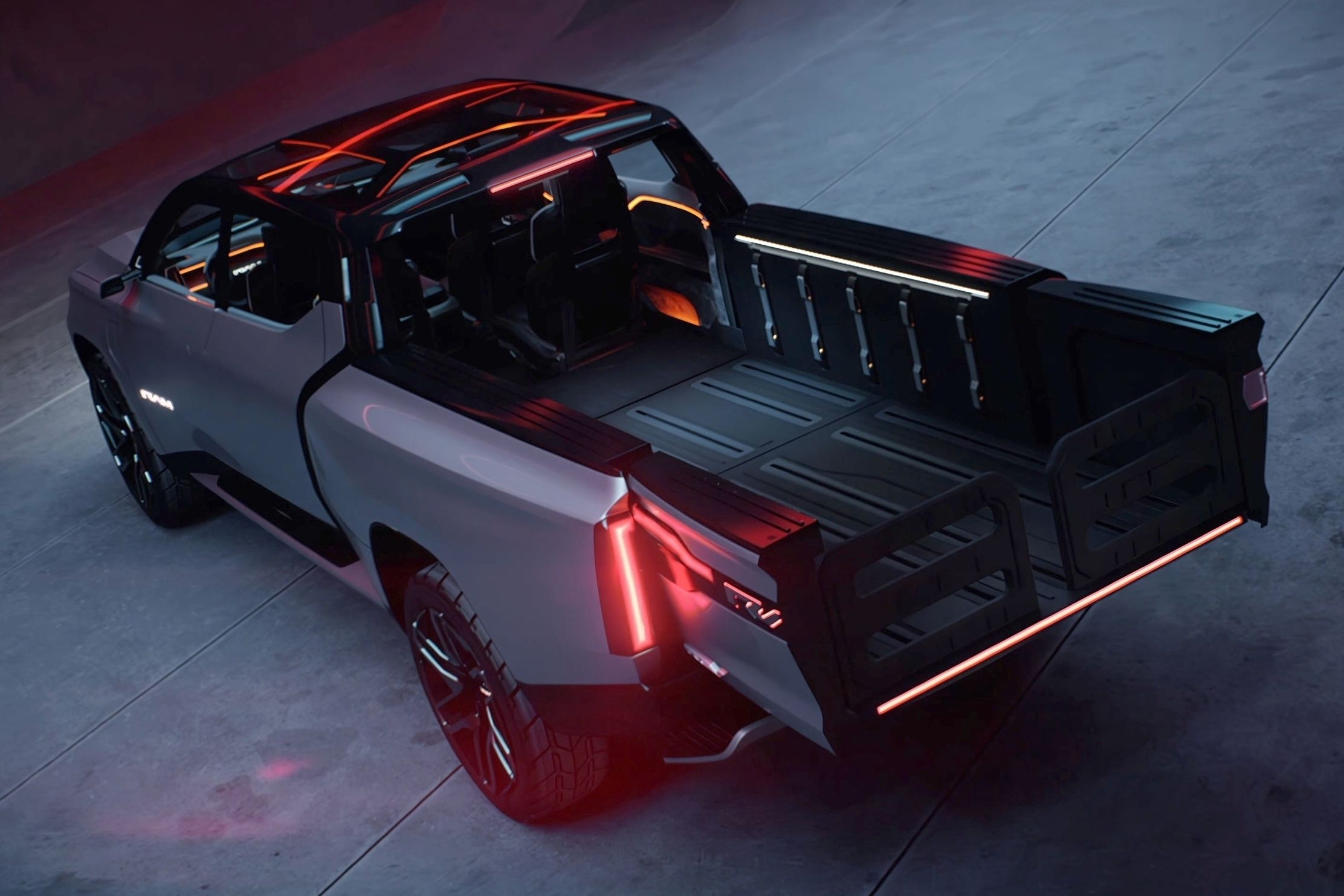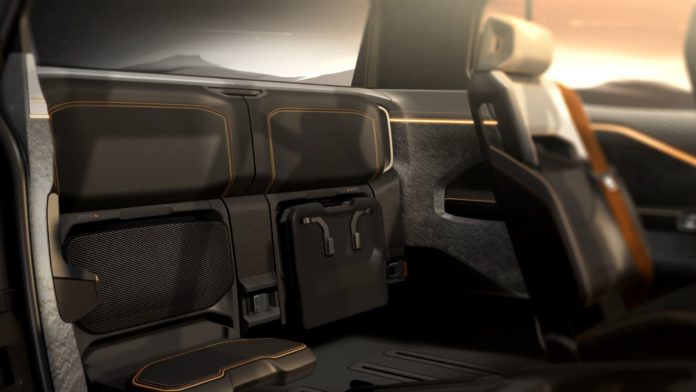Key Takeaways
- Ram’s removable third-row jump seats have been patented, hinting at production.
- Seats can be clipped onto the rear wall, removed for extra space, or placed on the tailgate for outdoor seating.
- Ram 1500 REV’s third-row jump seats may only arrive in the second-generation model; first-gen will arrive in Q4 2024.
In January last year, Ram revealed the 1500 EV Revolution Concept as a preview of what to expect from the eventual production pickup, but when the production version of the Ram 1500 REV was revealed the following month, it was missing several of the innovative features that drew so much attention to the electric truck in the first place. While this was disappointing at first, Ram realized that it couldn’t jam every single expensive new idea into its first entrant in the electric truck niche if it wanted to be competitive and promised it would gradually introduce many of these features, depending on customer demand. One of those features was the option of removable third-row jump seats, and now, more than a year after the concept was revealed, a patent for the novel seating design has been discovered at the United States Patent and Trademark Office by CarBuzz.
Practical Jump Seats Appear Poised For Production
The industry-first feature sees the seats clipped onto the rear wall of the cabin, which in the concept also acted as a midgate passthrough for extra-long loads. Coincidentally, this is a feature that GMC considered applying to the Hummer EV in the early design stages, albeit without Ram’s extra seating. In the Stellantis patent, both the backrest and the folding seat clip onto this wall can be removed for a little more space or for a flatter floor when using the passthrough. Additionally, they can be placed on the tailgate if the user desires, creating an outdoor seating area for two with no more effort than unclipping and fastening a couple of lightweight pads per seat.

Add CarBuzz to your Google News feed.
The seats can also be placed outside the vehicle and fastened to a flat surface. The patent for this design explains the detaching and fastening mechanisms, which could be actuated using a single lever for convenience, but what matters to us is not how to recreate the Stellantis feature. As long as provision is made for additional legroom, just about any automaker could introduce such an option.
Rather, we’re intrigued by the fact that the patent has been filed so close to the launch of the 1500 REV’s production cycle and not at the same time (or before) as the seats were first seen in the concept, which is the typical timeframe for new technology patents.
When Will We See Third-Row Jump Seats In The Ram 1500 REV?
When Stellantis design boss Ralph Gilles described the truck last year, he said it was essentially a manifesto and roadmap of where the brand is headed, and this sort of patent indicates that Ram is headed toward greater comfort and practicality. Gilles added that many of the concept’s features would appear in production in the “near long term.” Meanwhile, then-CEO Carlos Tavares said, “Everything that you have seen on the CES concept car will come at different steps of the lifecycle management or for the next generation, depending on the feature.”

Related
The Electric Ram 1500 REV Will Be Just As Cool As The Concept
The production version of Ram’s electric truck was missing a number of the concept’s innovations, but they are still in the works.
Now, according to the Ram Trucks website, the 1500 REV will arrive in the final quarter of 2024, which we’re already fast approaching. In our minds, it’s highly possible that the design has been patented because its production tooling may be in construction. This suggests that it’s possible we’ll see third-row jump seats on the mid-cycle facelift or the eventual second-generation model. We should also keep in mind that the other interesting features that could still come to the truck include a wireless EV charger, an augmented reality head-up display, and up to 28 inches of touchscreen real estate. We’ll just have to wait and see, but this patent and its timing have us quietly optimistic.
Patent filings do not guarantee the use of such technology in future vehicles and are often used exclusively as a means of protecting intellectual property. Such a filing cannot be construed as confirmation of production intent.

